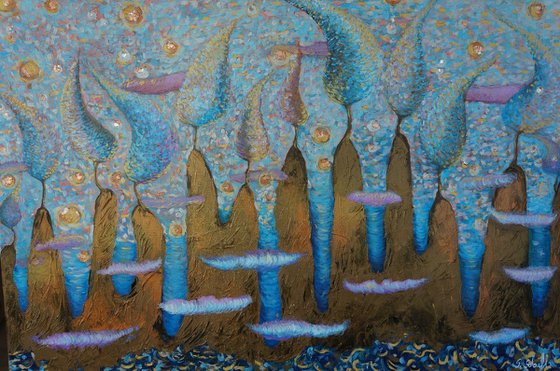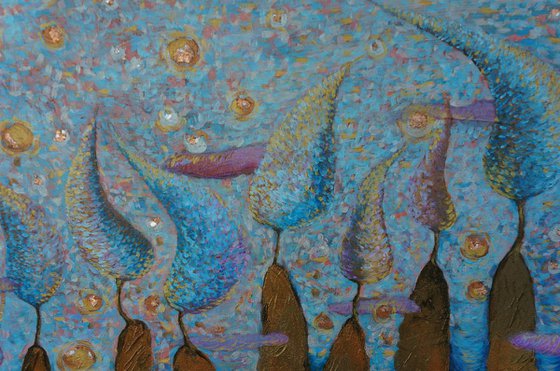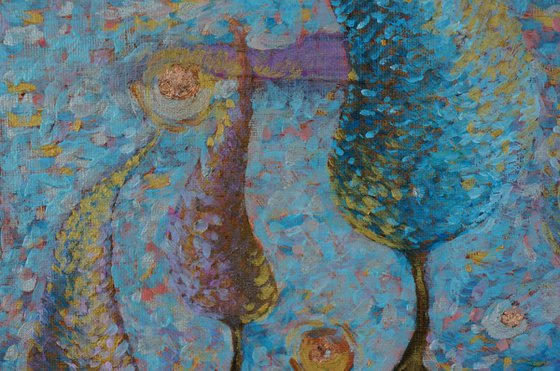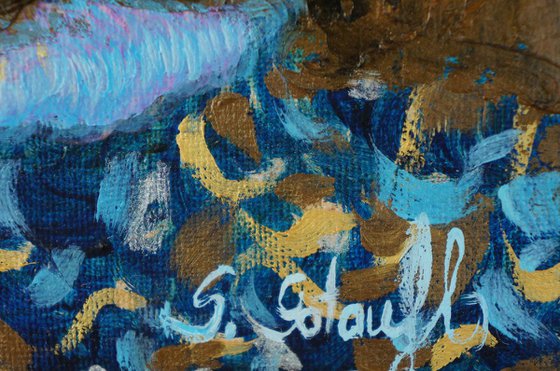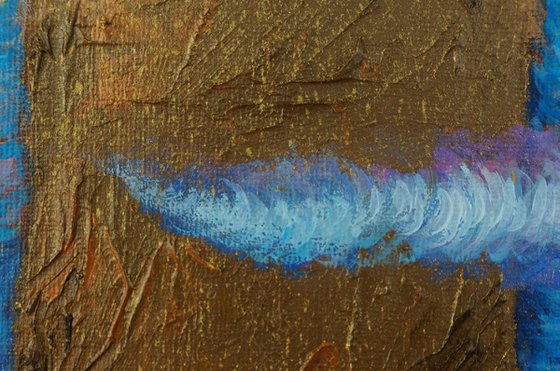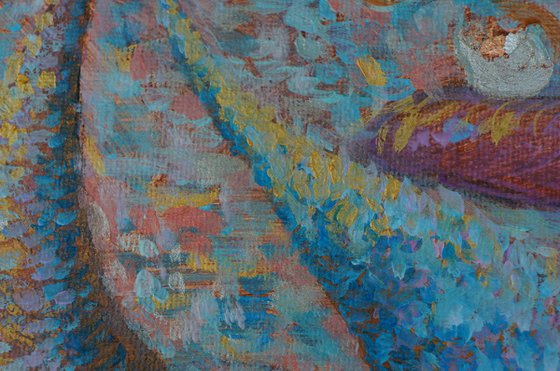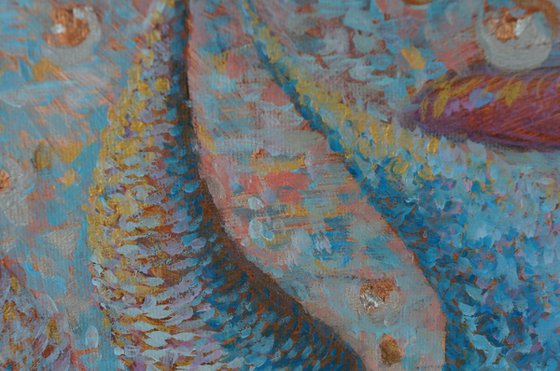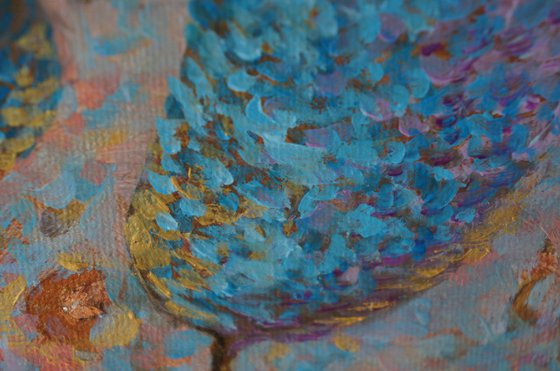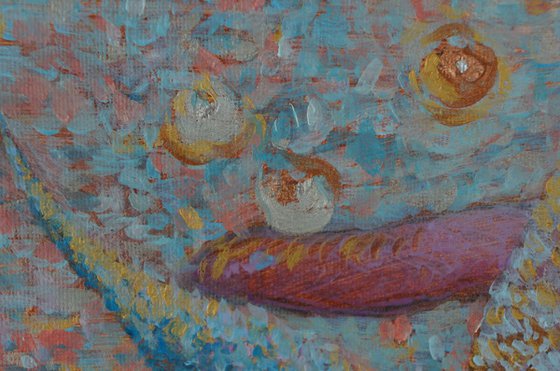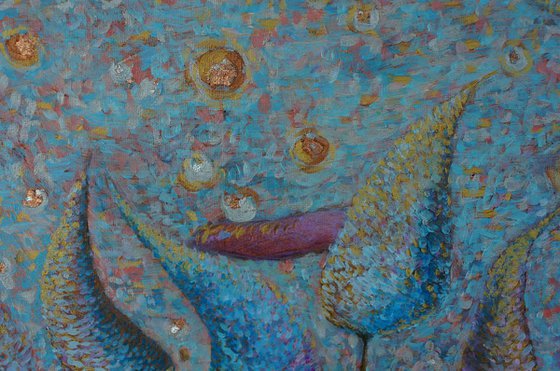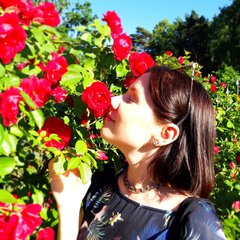- By medium
- By subject
- By budget
- Sales
- Gift cards
- Discover all art
- Artists
- Editors’ picks
- Ideas
Original artwork description:
This is how the MOON is described in Vedic literature:
By the sunlit moon that is situated a hundred thousand yojanas [astronomy: ± 385.000 km] above the earth and is moving much faster than the sun, in the course of a month two 'fifteen day periods' a distance is covered that takes the sun a whole year, is in two and a quarter day a distance described that takes the sun a month and is in one day a part of the sky traversed that by the sun is covered in fourteen days. The moon, changing its phases, waxes to the full part of the moon that is of the demigods and wanes to the dark part of the moon that is of the forefathers. In about thirty muhûrtas [a full day] every time passing one of the lunar mansions, it with its waxing and waning constitutes the division of the days of the gods and the nights of all the different living entities. Thus it is considered the jîva or essence of their life. This moon with all its sixteen parts is by the scholars described as the Supreme Person, the predominating deity of the mind, the power source of all food, who represents all delight in life. He is considered the refreshing, all-pervading life breath [prâna] of all the demigods, ancestors, human beings and all other living entities like the mammals, the birds, the reptiles and the plants.
Materials used:
oil on canvas
`Moon Gardens` (2018)
Oil painting
by Sandra Gotautaite
£550 Sold
- Oil painting on Canvas
- One of a kind artwork
- Size: 70 x 50 x 2cm (unframed) / 50 x 70cm (actual image size)
- Ready to hang
- Signed on the front
- Style: Impressionistic
- Subject: Landscapes, sea and sky
Do you like this artwork?
This artwork has sold, but the artist is accepting commission requests. Commissioning an artwork is easy and you get a perfectly personalised piece.
Original artwork description
This is how the MOON is described in Vedic literature:
By the sunlit moon that is situated a hundred thousand yojanas [astronomy: ± 385.000 km] above the earth and is moving much faster than the sun, in the course of a month two 'fifteen day periods' a distance is covered that takes the sun a whole year, is in two and a quarter day a distance described that takes the sun a month and is in one day a part of the sky traversed that by the sun is covered in fourteen days. The moon, changing its phases, waxes to the full part of the moon that is of the demigods and wanes to the dark part of the moon that is of the forefathers. In about thirty muhûrtas [a full day] every time passing one of the lunar mansions, it with its waxing and waning constitutes the division of the days of the gods and the nights of all the different living entities. Thus it is considered the jîva or essence of their life. This moon with all its sixteen parts is by the scholars described as the Supreme Person, the predominating deity of the mind, the power source of all food, who represents all delight in life. He is considered the refreshing, all-pervading life breath [prâna] of all the demigods, ancestors, human beings and all other living entities like the mammals, the birds, the reptiles and the plants.
Materials used:
oil on canvas
14 day money back guaranteeLearn more
